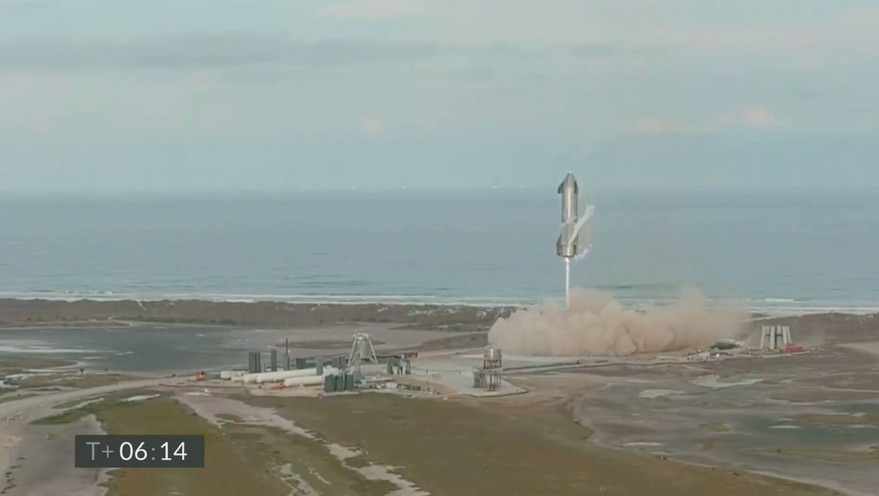Sorry, nothing in cart.
SpaceX launches and lands Starship prototype, which later explodes
- By michael@cvcteam.com
- |
WASHINGTON — SpaceX launched a prototype of its Starship next-generation vehicle March 3, landing it safely only to have the vehicle explode minutes later.
The Starship SN10 vehicle lifted off from the company’s Boca Chica, Texas, test site at about 6:15 p.m. Eastern. A launch attempt three hours earlier was aborted at engine ignition because of a “slightly conservative high thrust limit,” company founder and chief executive Elon Musk tweeted.
The SN10 flight followed a similar profile to two previous one, by SN8 on Dec. 9 and SN9 on Feb. 2. The vehicle flew to a planned peak altitude of 10 kilometers, shutting down its three Raptor engines in sequence during the ascent. The vehicle then performed a “belly flop” maneuver to a horizontal orientation to descend back to its landing pad.
On the two previous Starship test flights, SpaceX had problems reigniting two Raptor engines needed for a powered landing after flipping back to a vertical orientation. SpaceX changed the procedure on this landing attempt, igniting all three and then shutting down two as needed for the landing.
That appeared to work. The vehicle touched down on the pad softly, rather than crash and explode, about six minutes and 20 seconds after liftoff. Video showed that the vehicle was leaning slightly but otherwise appeared intact — initially.
“Third time’s the charm, as the saying goes,” John Insprucker, the SpaceX engineer who hosted the company’s webcast of the flight, said. “A beautiful soft landing of Starship on the landing pad in Boca Chica.”
SpaceX terminated the webcast at that point, but independent webcasts showed that, about eight minutes after landing, there was an explosion at the base of the vehicle. The explosion flung the vehicle into the air, crashing back down on the pad several seconds later. Neither SpaceX nor Musk immediately commented on the explosion, but webcasts showed hoses spraying water at the base of the vehicle in the minutes before the explosion.
Insprucker noted the next prototype, SN11, is “ready to roll out to the pad in the very near future.”
The flight came one day after Starship’s first announced customer revealed new plans for his mission. In September 2018, Japanese billionaire Yusaku Maezawa said he had purchased a flight of the vehicle, then known as BFR, for a circumlunar trip in 2023. On that mission, called “dearMoon,” Maezawa would fly with up to eight artists.
Maezawa updated his plans for dearMoon March 2, announcing a contest open to the general public to fly eight people on that mission, still scheduled for 2023. “I began to think that maybe every single person who is doing something creative could be called an artist,” he said in a video. “If you see yourself as an artist, then you’re an artist.”
The project’s website has opened up preregistrations for the contest, which will be followed by an “assignment” and interviews, with selections of the crew expected by the end of June. The project offered no additional details about that selection process, or any restrictions based on age, physical condition or nationality. The project did not respond to questions from SpaceNews on those and related topics about the project.
Maezawa said a total of 10 to 12 people will fly on the mission, but did not disclose who those beyond the eight selected in the competition would be.
Musk, who also appears in the video, said he believed Starship would be ready to carry people around the moon by 2023. “I’m highly confident that we will have reached orbit many times with Starship before 2023, and that it will be safe enough for human transport by 2023,” he said.
“I’m a little scared,” Maezawa admitted in the video, “but I’m more curious and I trust Elon and the SpaceX team, their technological prowess and teamwork.”


Leave a Reply